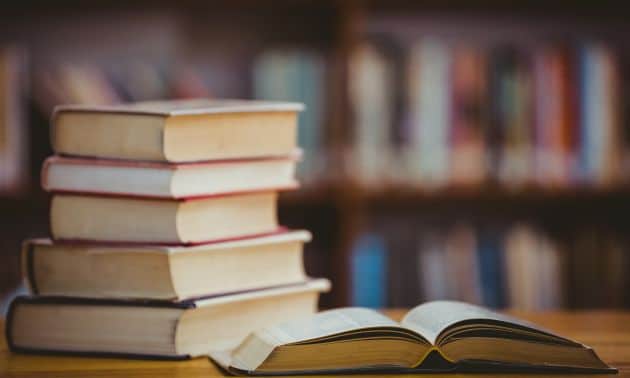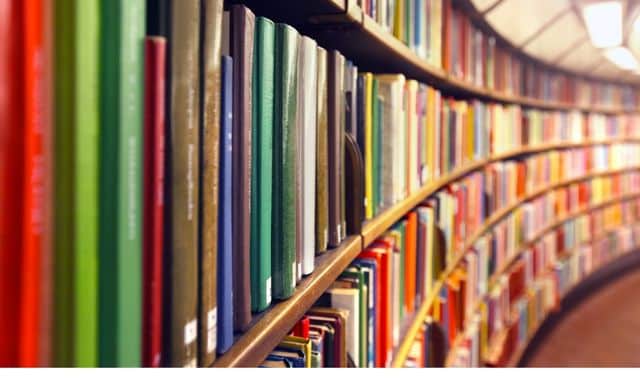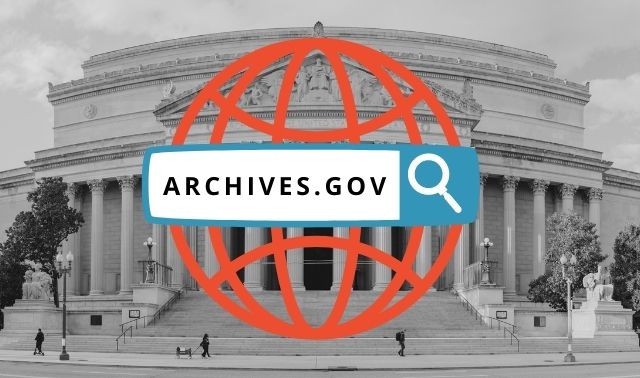
And if a relative’s specific place of origin yet proves elusive, learning the history of that heritage group may offer another research pathway, suggesting new records to try or offering clues in the lives of his countrymen.
Heritage centers and museums—usually located in places where people of a particular heritage settled together—cover nearly every ethnicity and cultural group. Whether your ancestors hail from Germany, India, Ireland, Japan, Sweden, Syria, Ghana, Mexico or elsewhere, there’s probably a museum that provides historical materials and a glimpse of that culture’s customs, history and people.
Some centers serve both as history museum and research destination, with manuscript collections, foreign-language newspapers, photographs, maps, local histories and more. They may offer genealogy workshops, translation help and research assistance.
Okage Sama De, the title of an exhibit at the Japanese Cultural Center of Hawai’i, translates to “I am what I am because of you.” That’s the crux of heritage museums’ significance: Exploring one rewards you with a better understanding of who your ancestors were—and thus, how you came to be who you are. Here, we highlight 11 of the best heritage museums in the United States, chosen for their genealogist-friendly research libraries, exhibits, tours, classes and community events. Use this guide as a springboard to similar organizations covering your family’s heritage.
American Italian Cultural Center
New Orleans • Immigrants from Sicily, who flooded New Orleans in the late 1800s, gave the Big Easy its famous muffaletta sandwich. You can still steep in your family’s Italian heritage here, in addition to starting your genealogy search. Genealogist Sal Serio conducts family history classes. The center also offers Italian language courses.
Genealogists researching Italian roots can access special collections at the library, including books, magazines and Italian-language newspapers. “Vertical files,” Serio says, “are packed with information about businesses and benevolent societies, which are prolific in this part of the country.” Make an appointment with Serio for guidance to the right sources and help with translation.
Balzekas Museum of Lithuanian Culture
Chicago • The genealogy department here holds newspapers, books, obituaries, annals, maps and other documents in a collection that spans most of Lithuania’s turbulent history, from the 13th century to 1940. Although you can’t research the collection yourself, staff provide in-depth consultation services to museum members. Nonmembers can take advantage of fee-based services including translation of old documents.
Lithuanian name spellings can vary, as can languages used in records. Pre-WWI documents, for example, are usually written in Russia’s Cyrillic script. Records also may be in Latin or Polish.
Get to know the culture of your ancestors in the museum, says Karile Vaitikute, genealogy department director. “There are exhibits and a film that describe Lithuanian history, national costumes, Lithuanian art, agricultural items and even a small house,” she says. The museum also provides workshops and guided travel opportunities.

Courtesy of the Cherokee Heritage Center
Cherokee Heritage Center
Tahlequah, Okla. • Your admission to the Cherokee Heritage Center allows you access to the Trail of Tears exhibit, Diligwa (a 1710 Cherokee village), Adam’s Corner (an 1890s rural Oklahoma village) and Cherokee Family Research Center.
Most visitors are new to genealogy. “They’re here primarily because they learned from a family story or legend that one of their ancestors is Cherokee,” says Gene Norris, the center’s genealogist. He recommends starting your research with three federally compiled rolls covering the Cherokee: the Dawes Final Roll, the Guion Miller Roll and the Baker Roll. The center’s website offers tips on getting started.
The library offers databases and records including government and private documents, photographs, posters, maps, architectural drawings, books, manuscripts and articles focusing on Cherokee history and culture. Staff researchers are available for hire.
Ellis Island National Museum of Immigration
New York, NY • Ellis Island’s immigration museum tells the stories of arrivals before, during, and after Ellis Island processed immigrants (1892 to 1954). The Peopling of America Center, opened in 2015, shares the migration history of American Indians, slaves transported against their will, and Colonial- and Victorian-era immigrants.
The island’s American Immigrant Wall of Honor is inscribed with more than 700,000 names of immigrants through all ports.
If your ancestors came through Ellis Island, you can walk in their footsteps at the immigration museum, view the renowned Great Hall, and follow an audio tour through the immigrant experience as if you were a new arrival. A centerpiece is the American Family Immigration History Center passenger list archive. Now numbering 51 million names of passengers all the way up to 1954, the database is searchable both on-site and online; search results link to images of original manifests showing the immigrant’s name, age, last place of residence and more. You also can view images of immigrant passenger ships—maybe even your ancestor’s.
Historic Huguenot Street
New Paltz, NY • Huguenots were Protestants, largely from France, who left their homelands to escape religious persecution. Many settled in New York’s Hudson Valley, South Carolina and elsewhere along the East Coast. Their descendants include George Washington, the grandson of a Huguenot.
Start exploring this 10-acre museum at the Visitor Center, then head to any of seven historic stone houses, a reconstructed 1717 church, a burial ground dating to the earliest settlers, archaeological sites and more. The annual Gathering for Huguenot descendants includes history workshops that may open a door to your family tree.
“Historic Huguenot Street holds genealogies of the New Paltz patentees and associated families, transcriptions of church records, surname folders that include family trees, plus the archive of items such as letters, family Bibles, and estate records,” says spokesperson Kaitlin Gallucci. Access the research library on-site by appointment ($25) or send a research inquiry.
Irish American Heritage Center
Chicago • Nestled on Chicago’s northwest side, the Irish American Cultural Center houses a museum (open for tours by appointment) with artifacts including exquisite Irish lace, an art gallery, the Fifth Province pub, a theater, classrooms and a research library.
“This is the place to find out where you’re from,” says spokesperson Kathy O’Neill. You’ll find 25,000 books on Irish history and literature, newspapers, access to online databases, and other material. A limited-access archives section preserves documents, records and other rare and historic items. Family history classes take place once a month, or you can make an appointment with a staff researcher. Other classes cover Irish language, history and music. Celebrate your Irish heritage here with folk concerts, traditional céilí dances, festivals and storytelling.
Japanese Cultural Center of Hawai’i
Honolulu • Those tracing Japanese roots, especially in Hawaii, will find a valuable resource here. “The center’s historical Okaga Sama De exhibit tells the story of Japanese immigration to Hawaii, from 1860 to statehood and beyond,” says Derrick Iwata, education and cultural specialist.
Visitors can tour the Honouliuli Education Center, which focuses on Japanese internment during World War II. Experience Japanese culture at one of the center’s festivals, including a New Year’s Ohana (Family) Festival on the second Sunday in January. Or come for the classes on martial arts and the Japanese tea ceremony (called chado, or the Way of Tea).
The center’s Tokioka Heritage Resource Center offers a wealth of material related to Japanese-American history, art and culture on Hawaii and the mainland. “Our library and archives has an assortment books and oral histories, as well as a number of directories which list Japanese residents in Hawaii,” says center manager Marcia Kemble. (Access the catalog here.) Staff can provide fee-based services such as translation, Japanese name consultation, and genealogical assistance, including help obtaining a family registry record, or koseki tohon, from Japan.
Museum of Jewish Heritage
New York • “In the case of Jewish genealogy, where so many records were lost and lives disrupted, an institution like the Museum of Jewish Heritage provides a crucial narrative,” says Michael Glickman, museum president and CEO.
The core exhibition uses first-person histories, photos, video and artifacts to explain Jewish history and tradition before WWII, European Jews’ confrontation with the hatred and violence of the Holocaust, and Jewish communities today. (View a selection of photos and documents here.) The outdoor Garden of Stones is a memorial to those lost in the Holocaust.
This museum’s “research library” is at its free partner website, JewishGen, where you’ll find discussion groups and more than 22 million records, including Holocaust records, a burial registry and the Communities Database. “Say your grandfather came from a town called Ostroleka,” Glickman says. “You might find six towns with the same name. How would you know which is the town your grandfather was referring to?” The database lists 6,000 Jewish communities, with their political jurisdictions and name variants over time.
National Hispanic Cultural Center
Albuquerque, NM • Archivist Anna Uremovich calls this center a “full saturation of the Hispanic culture.” Its art museum features a 4,000-square-foot buon fresco depicting thousands of years of Hispanic history, and works from Spanish artists around the world. You also can attend art classes and other events.
The research library and archives is a destination for family historians with deep Southwest roots, holding Spanish census records, land grants, and the 90-volume set of Enciclopedia Heraldica Genealacia Hispano-Americana and the 15-volume Diccionario Hispanoamericano de Heraldica Onamastica y Genealogia. These books include more than 15,000 names from Spanish and Spanish-American families.
Search the library catalog here (select National Hispanic Cultural Center from the menu at the top right). Uremovich also suggests researching Catholic parish records to learn family birth, marriage and burial details, and sometimes, names of other relatives.

National Underground Railroad Freedom Center
Cincinnati • Search for African-American roots in the John Parker Library on the fourth floor of this inspirational museum (admission isn’t required if you’re just visiting the library). The library hosts a FamilySearch Center, where you can use databases, microfilm and other resources from FamilySearch. You can call ahead to schedule an appointment with an on-site genealogist. “We help between 60 to 120 patrons a month,” says marketing director Jamie Glavic, who recommends first completing as much of a pedigree chart as you can.
The Freedom Center museum can help you understand the experiences of your enslaved ancestors, who they were, how they were transported to America, and how they lived and worked here. Step inside a slave pen built in the early 1800s on a Kentucky farm, and follow in the footsteps of Underground Railroad passengers and conductors whose actions resisted slavery.
Watch a short film, narrated in part by Oprah Winfrey, describing the work of early abolitionists, intent on ending slavery. You’ll learn about those who resisted slavery and how slavery continues today.
Swedish American Museum
Chicago • Step inside this museum in the heart of Chicago’s “Little Sweden,” and you walk in the footsteps of Swedish immigrants, from preparing to leave their homeland to building new communities in America. View artifacts including steamship tickets, passports, folk crafts and household items brought from Sweden. A children’s museum allows kids to do chores in a stuga (farmhouse) and board a 20-foot “steamship.”
The center’s Swedish American Genealogy Research Center is “the only Chicago-area center that focuses on Swedish research,” says volunteer Vereen Nordstrom. It holds Swedish censuses, immigration and burial records; provides access to church records on the Swedish subscription website ArkivDigital; and hosts genealogy classes. Make an appointment to work with volunteers like Nordstrom, or send a research request (free for members of the museum’s Swedish American Genealogical Society; fee-based for nonmembers).
More Online
Free Web Content
For Plus Members
Family Tree Shop
- The Family Tree Historical Atlas of American Cities
- Online Immigration Records on-demand webinar
- Downloadable guide: Visit a Living History Museum
From the July/August 2017 Family Tree Magazine.





